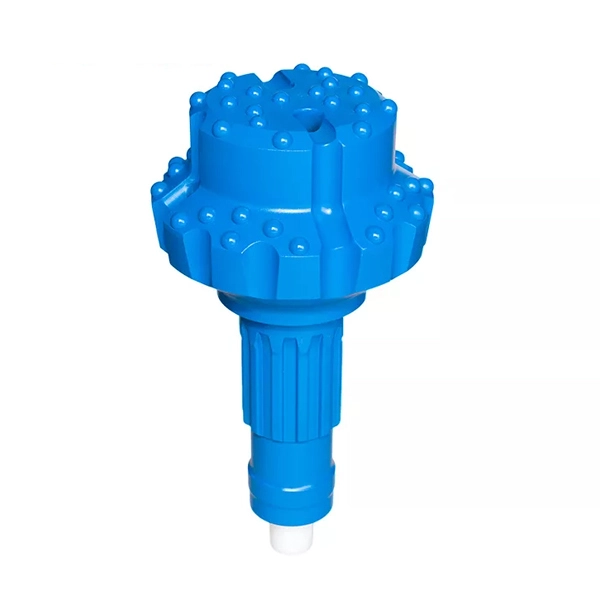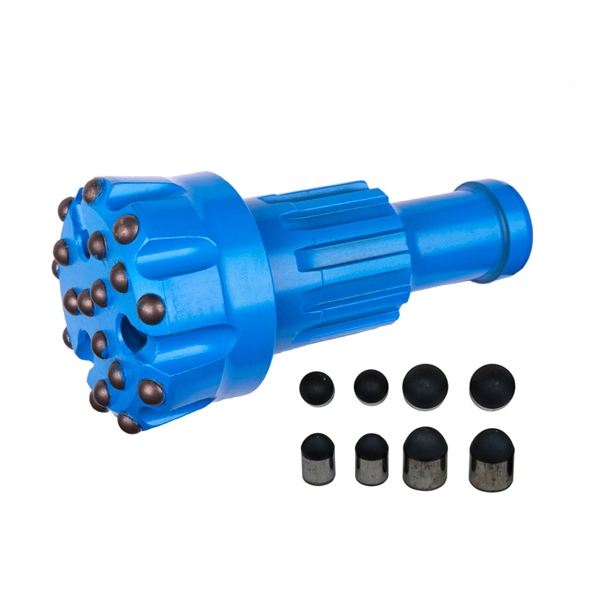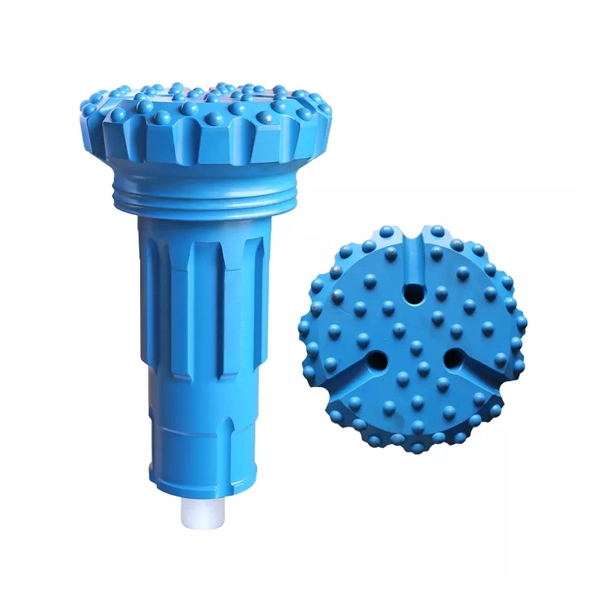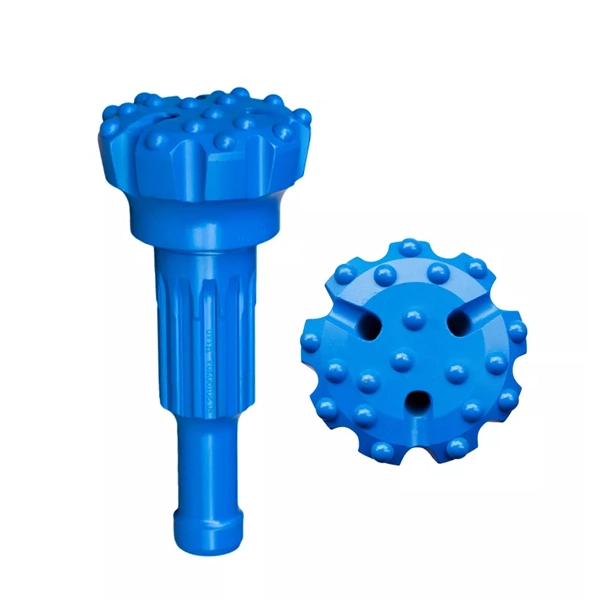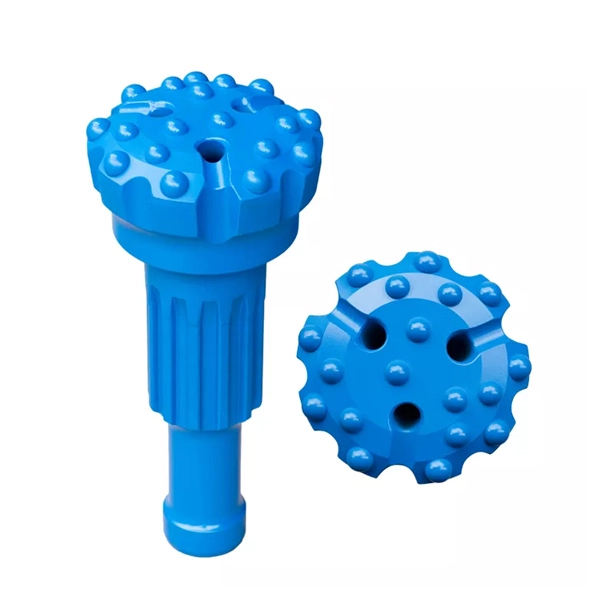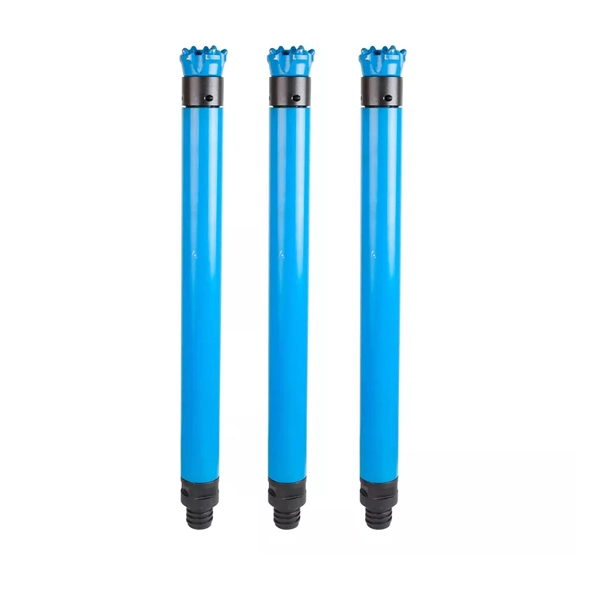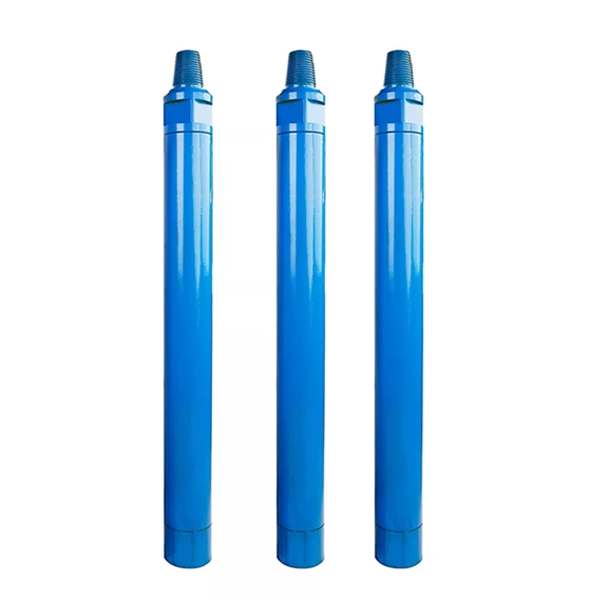Down The Hole Drilling DTH Hole Opener Button Bit
CLICK ENLARGE
| Hammer Size | Hammer Shank Types | Guide Dia. | Reamed Dia. | ||
| mm | inch | mm | inch | ||
| 3.5 | DHD3.5, QL30, COP34 | 80~110 | 3 1/8 ~ 4 5/16 | 130~165 | 5 1/8 ~ 6 1/2 |
| 4 | DHD340A, QL40, SD4, Mission 40, Mach44 | 82~115 | 3 1/4 ~ 4 1/2 | 165~178 | 6 1/2 ~ 7 |
| 5 | DHD350R, QL50, SD5, Mission50 | 75~138 | 2 15/16 ~ 5 3/8 | 152~216 | 6 ~ 8 1/2 |
| 6 | DHD360, QL60, SD6, Mission60 | 108~296 | 4 1/4 ~ 11 5/8 | 191~381 | 7 1/2 ~ 15 |
| 8 | DHD380, QL80, SD8, Mission85 | 140~296 | 5 1/2 ~ 11 5/8 | 200~381 | 7 7/8 ~ 15 |
| 10 | SD10, Numa10 | 305~311 | 12 ~ 12 1/4 | 444.5~482 | 17 1/2 ~ 19 |
| 12 | DHD112, SD12, Numa120 | 216~444.5 | 8 1/2 ~ 17 1/2 | 312~660 | 12 5/16 ~ 26 |
How to order?
Guide Diameter + Reamed Diameter + Shank Type
PLATO DTH hole openers can provide hole enlargement for various down-the-hole hammer drilling application needs, reasons ranging from drilling rig and equipment capabilities to worksite condition and job specifications. In addition, Acedrills’ hole openers are available in several different designs, each of which can be best suited to certain applications. This tool is commonly utilized for industrial uses to create very large diameter holes.
Hole openers are specialized drill bits that can be used to widen pre-existing size bore holes. At some work condition it may be necessary to increase the size of a pre-drilled hole to a larger diameter or to drill large diameter holes. Hole opener bits are designed specifically for this purpose, which is an effective way of enlarging holes, hence the bits named as “Hole Opener”. A common practice involves drilling a relatively small pilot hole at first stage, and second and final stage then further widening it with a hole opener bits, since this can result in a straighter hole and require less powerful machinery. And different stages can be set per drilling specifications to maximize cutting breaking and removal, and rig capabilities. Besides, rotation torque, the DTH hole opener involves a concussive force that repeatedly impact a drilling head into the rock or other substrate. The impacting action can pulverize rock and also force it back and up, helping to clear out the borehole. So, in addition to widening a bore hole, a hole opener can also clean excess material out of it.
The drilling of large boreholes is required in a number of different industries, such as hydrocarbon exploration, well drilling, and horizontal excavation for tunnels and other purposes and so on. Drilling one large hole could require an exceptional amount of power and very large machinery, so the process is sometimes done in several steps. In some cases, a relatively small size bit will be used to drill a pilot hole. This kind of drilling practice typically requires less energy than doing it in one step and can also result in a straighter borehole. After this initial pilot hole has been drilled, a hole opener can be used to widen the borehole. In such case, the result can be a more precise borehole that was created with less powerful equipment than would have been needed to drill a large hole at beginning directly.
PLATO DTH hole opener bits are available in reamed diameters from 130mm to 660mm (5 1/8” to 26”) with shanks designs to fit most of the popular DTH hammers, and are manufactured in a several configuration styles to meet each particular field drilling requirements. Acedrills uses only the optimal steel in producing its’ hole openers too, which will give you hour after hour of trouble-free drilling, and with them you will always know that it was produced with the quality you have come to expect for. In addition, Acedrills is also able to work with you to design a new hole opener bit to maximize performance in the ground conditions you are faced with on your job if necessary.
PLATO is in the position to supply clients full range parts for DTH drilling tools chain, including DTH hammers, bits (or bits equivalent function tools), sub adapters, drill pipes (rods, tubes), RC hammers and bits, dual-wall drill pipes and hammer breakout benches and so on. Our DTH Drilling tools are also well designed and manufactured for mining, water well drilling industries, exploration, construction and civil engineering.
The down-the-hole (DTH) method was originally developed to drill large-diameter holes downwards in surface-drilling applications, and its name originated from the fact that the percussion mechanism (the DTH hammer) follows the bit immediately down into the hole, rather than remaining on with the feed as the ordinary drifters and jackhammers.
In the DTH drilling system, the hammer and bit are the basic operation and components, and the hammer is located directly behind the drill bit and operates down the hole. The piston strikes directly the impact surface of the bit, while the hammer casing gives straight and stable guidance of the drill bit. This means no impact energy loose through any joints at all in the drill string. The impact energy and penetration rate therefore remains constant, regardless of the depth of the hole. The drill piston is powered by compressed air delivered through the rods at supply pressure ranging typically from 5-25 bar (0.5-2.5 MPa / 70-360 PSI). A simple pneumatic or hydraulic motor mounted on the surface rig produces rotation, and flushing cuttings is achieved by the exhaust air from the hammer either by compressed air with water-mist injection or by standard mine air with a dust collector.
The drill pipes transmit the necessary feed force and rotation torque to the impact mechanism (the hammer) and bit, as well as convey compressed air for the hammer and flush cuttings by that the exhaust air blows the hole and cleans it and carries the cuttings up the hole. The drill pipes are added to the drill string successively behind the hammer as the hole gets deeper.
DTH drilling is very simple method for the operators for deep and straight hole drilling. In the hole range 100-254 mm (4” ~ 10”), DTH drilling is the dominant drilling method today (especially when the hole depth is greater than 20 meters).
The DTH drilling method is growing in popularity, with increases in all application segments, including blast-hole, water well, foundation, oil & gas, cooling systems and drilling for heat exchange pumps. And applications were later found for the underground, where the direction of drilling is generally upwards instead of downwards.
The main features and advantages of DTH drilling (mainly compare to top-hammer drilling):
1.Wide range of holes sizes, including extremely larger hole diameter;
2.Excellent hole straightness within 1.5% deviation without guiding equipment, more accurate than top-hammer, due to the impact being in the hole;
3.Good hole cleaning, with plenty of air for the hole cleaning from the hammer;
4.Good hole quality, with smooth and even hole walls for easy charging of explosives;
5.Simplicity of operation and maintenance;
6.Efficient energy transmission and deep hole drilling capacity, with constant penetration and no energy losses in joints through the drill string from start to finish of the hole, as with top hammer;
7.Creates less debris hang-up, less secondary breaking, fewer ore pass and chute hang-ups;
8.Lower cost on drill rod consumables, due to drill string is not subjected to heavy percussive force as with top hammer drilling and drill string life is therefore greatly lengthened;
9.Reduced risk of getting stuck in fractured and faulted rock conditions;
10.Lower noise level at the worksite, due to the hammer working down the hole;
11.Penetration rates are almost directly proportional to air pressure, therefore doubling the air pressure will result in approximately double the penetration.
Your email address will not be announced. The required field marking is*

